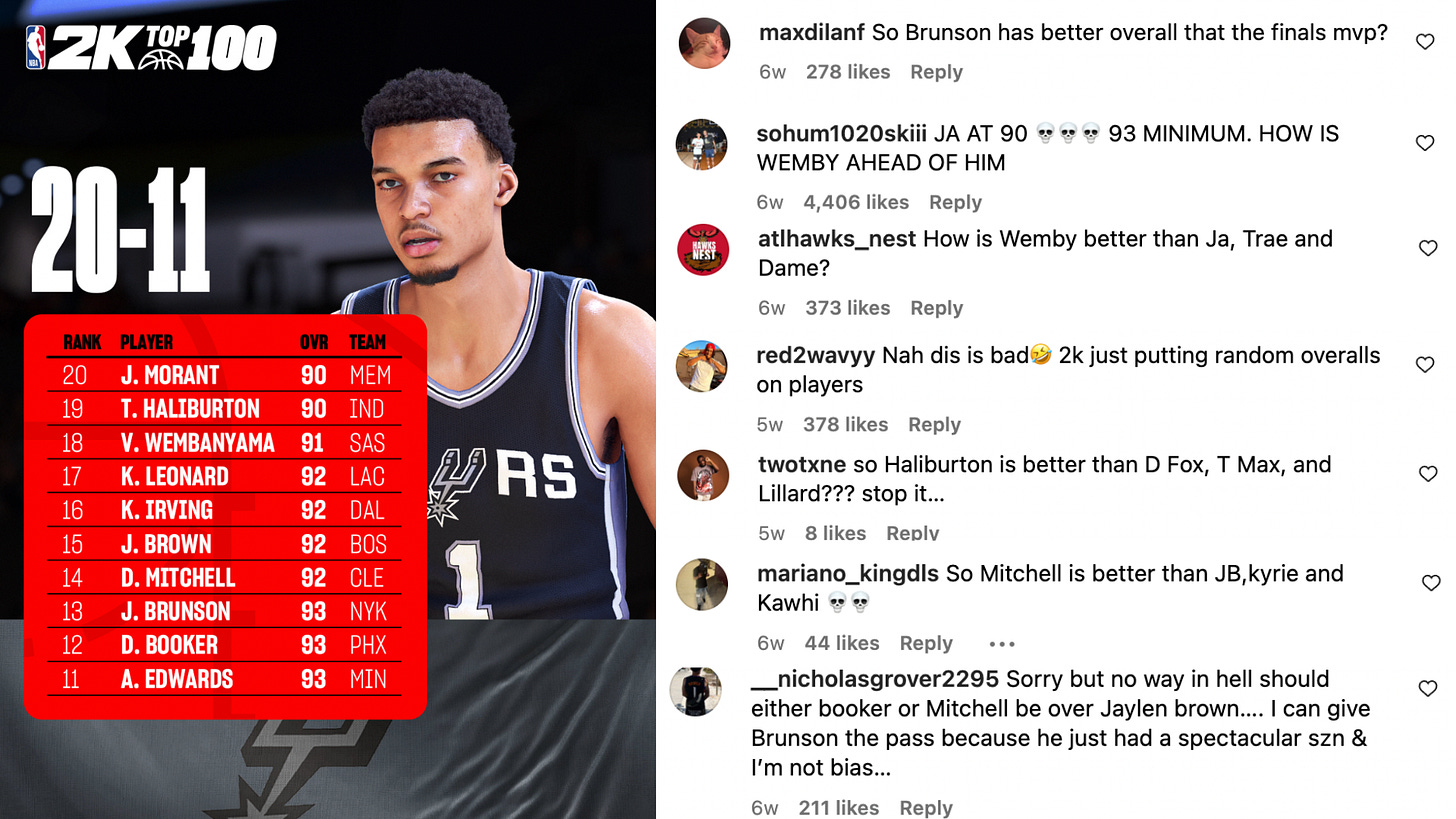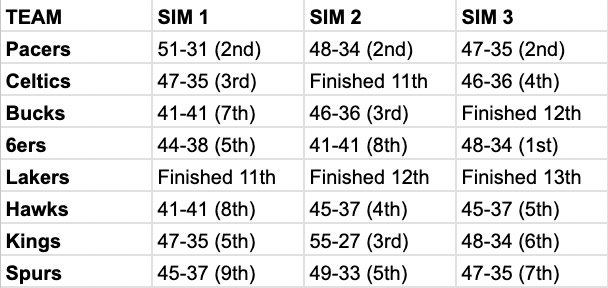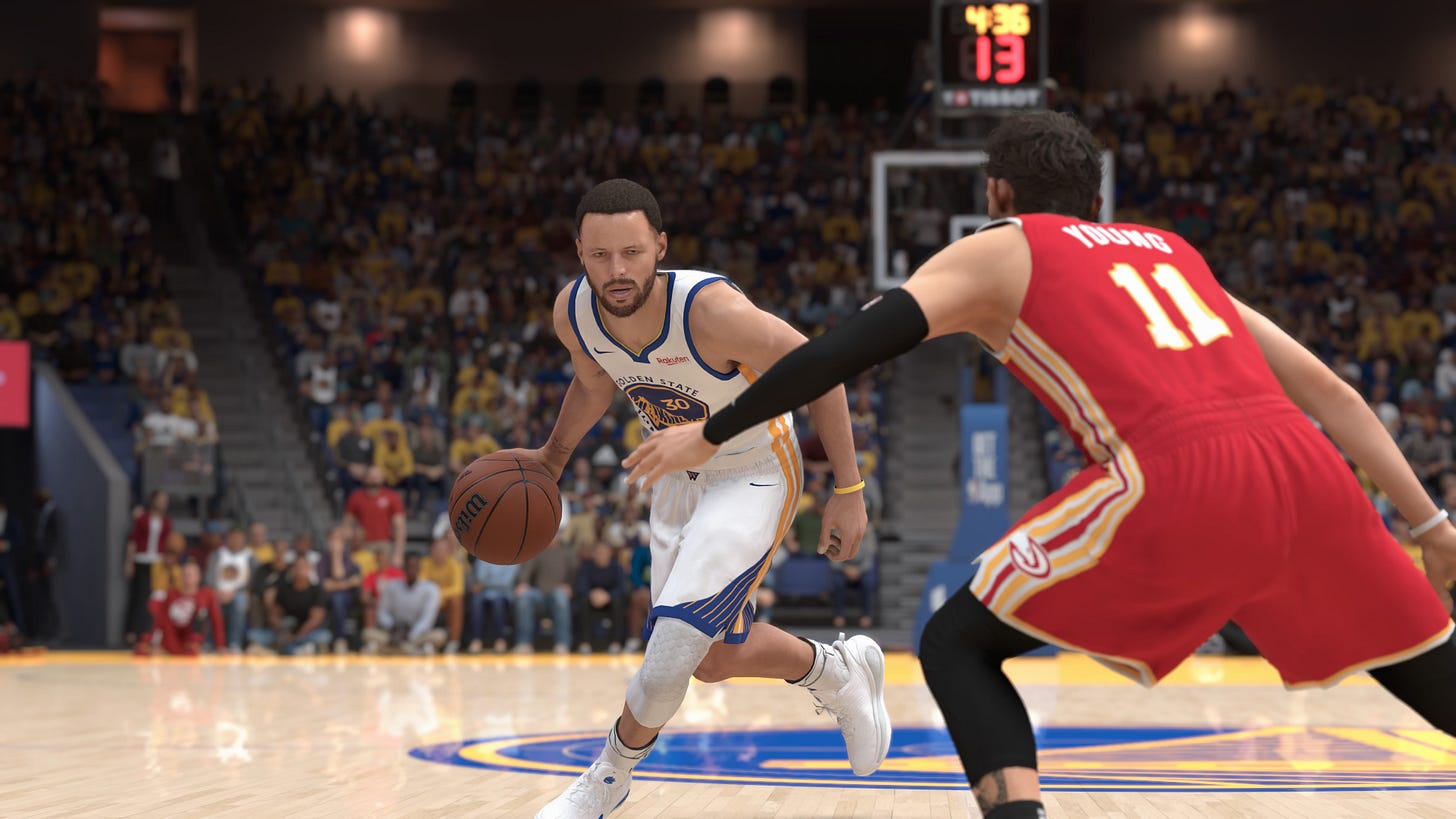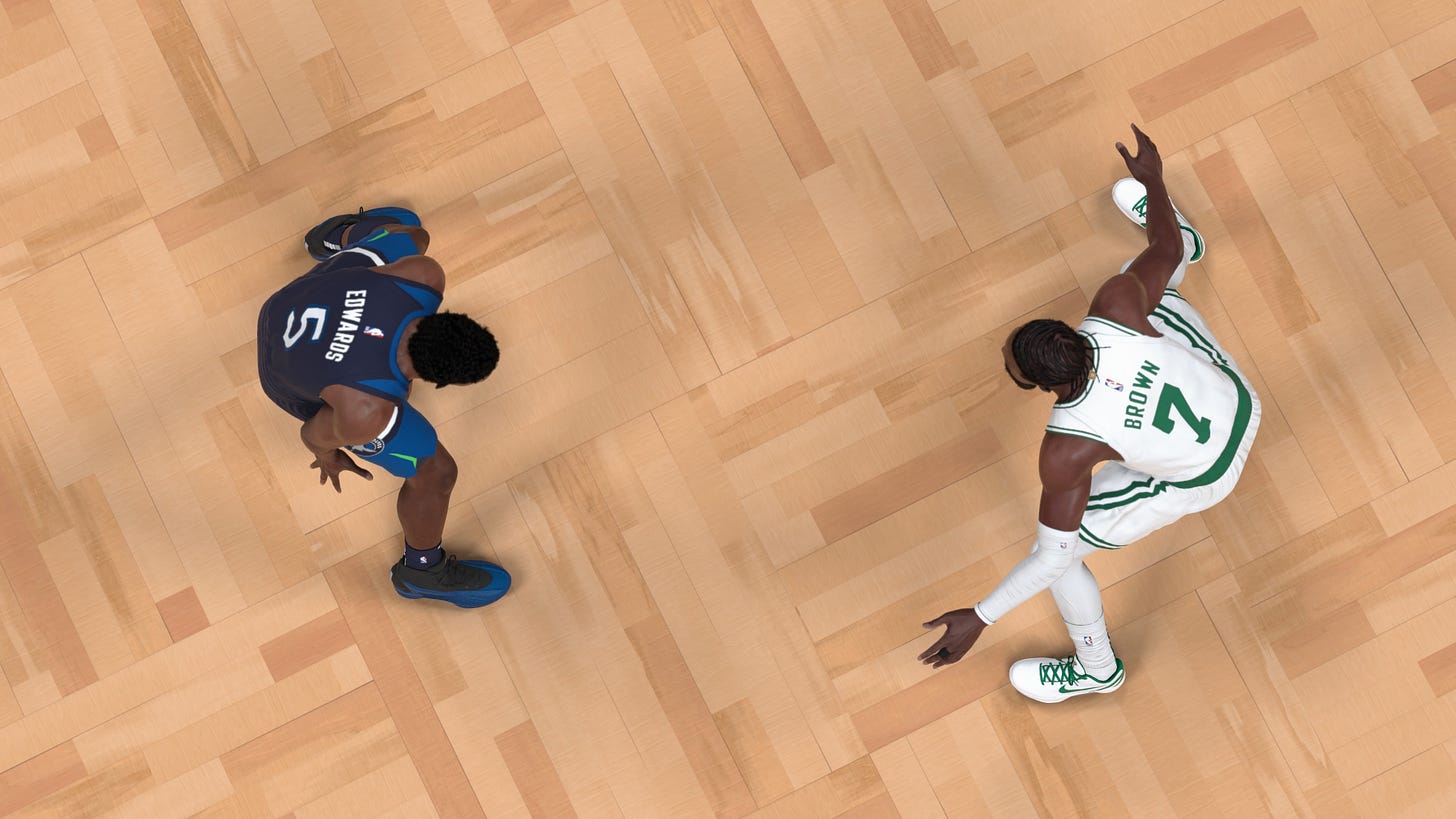NBA 2K Player Overalls and MyLeague : How real-life performance affects simulation
What NBA 2K tells us about player performance perception.
Screenshot from NBA 2K25, developed by Visual Concepts and published by 2K Sports.
The Player Overall Dilemma
How important are NBA 2K Ratings ? With all the backlash that 2K has been getting for the past half decade on how they run the game, it seems like the general consensus answer to that question would be a resounding “Hell No.” and “I don’t think they really matter.” Is that so ? Let’s see the people’s reactions to Victor Wembanyama getting a 91 in just his second season, Jalen Brunson hitting 93, Ja Morant being given a 90, and other ratings in NBA 2K25.
Taken from official NBA2K Instagram. Original Post
Oh. So people still do care. Pretty strongly at that.
What these reactions tells us is that people still care about accurate representations of real-life performances and proper importing to a basketball simulation medium. I feel that NBA 2K MyLeague is the best basketball simulation experience we have currently and player ratings being far from how they actually play can sour that experience. With how often the NBA community thinks of what-ifs and different trade scenarios, it is a very good outlet to see how these situations can pan out. In this article, we will take a deeper dive into how 2K MyLeague simulates and projects real-life player and team performance, specifically in NBA 2K25.
The Fine Line of Fun and Realism
I feel that these differing opinions on ratings shows how the media perceives and gives a ranking to player performances, and how this can often be heavily influenced by either recent performances or giving the benefit of the doubt to proven players. NBA 2K finds itself jumping over a very fine line of video game attribute ratings that enhance the fun of the game while trying to promote realism in these ratings. That’s why along with the attributes of a player which quantifies their skills such as shooting and defensive capabilities, there are also player tendencies that basically show how these ratings are translated to the virtual court and how often will a player utilize their given skills. Theoretically, a player with a 95 three point shooting rating but a 40 “Shot Three” tendency will be expected to shoot fewer 3s but at a more efficient clip.
Screenshot from NBA 2K25, developed by Visual Concepts and published by 2K Sports.
Kyrie Irving in NBA 2K25 I feel is a very good example of this. He was given a 92 overall rating which would put him as the 16th best player heading into next season, something that may elicit a reaction from a good amount of fans. This is coming off of a 25/5/5 season on 49/41/90 shooting splits. This is Kyrie’s highest overall entering a season since 2K19 (93), and I feel that it is agreeable that this high rating is due to how skillful of a scorer Kyrie Irving is. His offensive attributes carry a lot more weight when calculating his overall rating in 2K’s positional system, wherein he is listed at shooting guard.
For comparison, here are Kyrie’s 2024 regular season stats against to guard that would be seen as comparable.
Player Statistics taken from Basketball Reference. 2023-24 NBA Player Stats: Per Game | Basketball-Reference.com: Per Game
While a phenomenal submission of a season from Kyrie, this rating may come off as unfair when compared to the other players in this list. Players with better counting stats than Kyrie such as Trae Young (25.7 PPG and 10.8 APG), Tyrese Haliburton (20.1 PPG and 10.9 APG), and De’Aaron Fox (26.6/4.6/5.6 with a league leading 2.0 SPG) were rated up to 4 overalls below Kyrie. That would be the same gap between league-MVP Nikola Jokic (97) and Devin Booker (93). Many would agree that Kyrie is probably not that much better than Fox.
The Cogs of the Simulation
This puts the overall calculation system in a tight spot where player skills need to be accounted for while also making sure that it accurately represents the hierarchy of the top players in basketball. It is fair to say that legacy and past performances plays a part in the ratings. That’s why LeBron James has never dipped below 95 overall in almost a decade, and why Kawhi Leonard, even with all his injuries and noticeable regression, still manages to come in at a 92 overall.
Screenshot from NBA 2K25, developed by Visual Concepts and published by 2K Sports.
Why all this matters is that the overalls of players are the cogs that make the MyLeague simulation run. Uneven ratings will definitely lead to unrealistic computer projections for the 2025 season and past that. If we wanted unrealistic versions of the next few seasons we could easily manipulate the ratings ourselves so making the base roster a realistic representation of what they would do in real life would be optimal for the player experience. The game has done a serviceable job in doing so and pumping out a season simulation that wouldn’t seem so far fetched.
To better showcase this, I have done three CPU-controlled MyLeague simulations of the 2024-2025 season. This will be able to show a pattern of who seems to be expected to succeed in the upcoming season (to 2K at least), how past player performance leads to overall ratings and how these are translated to how they are projected to perform in 2025, accounting for growth and regression of each player.
With all this in consideration, this is the summary of what happened.
Simulation
The three Champions from the simulations were the Timberwolves, Mavericks, and Sixers, in order. These three teams don’t seem too far-fetched since they are consistently within the top 7 in sportsbook pre-season championship odds and are generally considered by fans and the media to be within the upper echelon of teams. It is a little weird to see the Celtics and Thunder not even make the Conference Finals in any of the simulations.
Screenshot from NBA 2K25, developed by Visual Concepts and published by 2K Sports.
We can start to see one unusual thing stick out, the Pacers made the Finals in Simulation 2. A team that, while on the rise, is not expected to reach that level just yet. Funnily enough, the Pacers are one of the better performing teams in the three simulations, finishing 2nd in the East in all scenarios and never having less than 47 wins in a season. Below is a list of other teams that performed pretty wildly and differently from what one would expect them to perform next season.
Here’s where the overalls that make up each team come in, along with the coaching staff ratings. I would say that even with these unexpected outcomes, the standings for each simulation were not blasphemously bad; I would say the biggest culprit would have to be the Lakers never even touching the play-in.
Now lets talk awards. Luka Doncic won MVP in every simulation with combined averages of 31 PPG, 11 RPG, and 9 APG. Zaccharie Risacher won Rookie of the Year in all simulations with mediocre combined averages of 13 PPG and 35% FG. In fact, 2K was pretty harsh on the 2024 draft class, none even being able to shoot above 40% FG. Amen Thompson won both 6th Man of the Year in all simulations and Most Improved Player in all but one simulation. Victor Wembanyama won MIP in that one simulation while also winning DPOY in all simulations (in just his second year !). His DPOYs were crazy too with him having combined averages of 1.6 SPG and 2.9 BPG in those seasons. I would say these are fair predictions by 2K with Amen’s awards probably being the most unlikely. Especially with the added fact that Amen just increased his APG to 6 and scoring to 12 PPG while still shooting 13% from 3.
Screenshot from NBA 2K25, developed by Visual Concepts and published by 2K Sports.
One more award to take note of was the scoring champion, in which Shai Gilgeous-Alexander was the league leader for all simulations. He never dipped below 33 PPG and would often be followed by Doncic, Anthony Edwards, Trae Young, and Jalen Brunson. Overall, not the most outlandish group to lead the league, but it is of note that recent scoring champion Joel Embiid never averaged above 26 PPG or came close to the Top 5 in scoring.
Finally, just to rapid fire some accolades that were notable and gives some insight to what statistics were favored.
2K loves Wemby, he would always make the All-Star team and All-NBA 1st team.
Melo and Cade took sizable leaps, both expected to average at least 25/5/5.
Sabonis was another stat monster that would always make All-Star and All-NBA 2nd team.
Kawhi would routinely make the All-Star team and stay healthy.
Not much love for reigning Finals MVP Jaylen Brown, only making the All-Star team once.
Cam Thomas averaged 25.0 PPG combined in all simulations.
No major star trades happened, biggest moves involved Cam Johnson, Jordan Clarkson, and Mitchell Robinson.
Takeaways
I just gave you a lot of numbers, names, and notes; so what can we get from this ? The MyLeague simulation experience, while not perfect, still gives a realistic and interesting take on how the next season is going to go. Overall ratings are media opinions based on real-life player performances and with that being the nature of it, will likely be polarizing. Factors such as how well-liked a player is, how skillful their highlights make them out to be, their legacy, and the unknown space that is their potential all go into calculating these overalls. You put a team of 15 of those calculations together and pit those against other teams and you will have a simulation that can be widely different from how you see these players.
Screenshot from NBA 2K25, developed by Visual Concepts and published by 2K Sports.
To relay back to the title of this article; simulation tries to emulate realism to enhance the user experience. Performances we get to see and critique are the basis of how the simulation’s moving parts will act with each other. Finding the perfect representation into a virtual medium is impossible to do but it shows how important it is to have proper judgement and contextual analysis when it comes to rating the skills of players we see. It is impossible to put a number on how good a basketball player is even if we know the number points, rebounds, and assists they had because there is an endless amount of factors that we cannot fully account for. Same with how sports analysts on sports talk shows are merely just giving their own subjection opinion on how good a player is even though every single advanced stat you can think of is available. I personally feel the mode is a great way to have our own “analyst moment” of basketball and how every opinion on a player and his performance is subjective and unique.
Screenshot from NBA 2K25, developed by Visual Concepts and published by 2K Sports.
This why we have the option to edit these attributes to our liking to make sure we get the best experience. If we couldn’t do that then it shouldn’t be called MyLeague, it shbould be called 2KLeague. There is something fascinating and thought-provoking about being able to see a different ending of the same scenario and that is what draws a niche but creative community to the virtual simulation of basketball.












